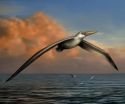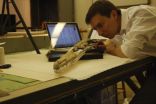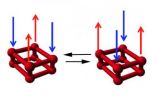(Press-News.org) 1. Task Force recommends against screening for carotid artery stenosis in general adult population
The United States Preventive Services Task Force recommends against screening for asymptomatic carotid artery stenosis in the general adult population, according to a recommendation statement being published in Annals of Internal Medicine. Stroke is a leading cause of death and disability in the United States and having carotid artery stenosis (a buildup of plaque in the carotid arteries that causes them to narrow) is a risk factor. although it accounts for a smaller number of strokes than the major risk factors hypertension, diabetes and hyperlipidemia. Ultrasonography is the most convenient and non-invasive screening test for carotid artery stenosis, but it is associated with a high rate of false positive results. Researchers conducted a systematic review of 56 published studies and found no evidence of a benefit for screening for carotid artery stenosis in the general population, but did find a small to moderate risk for harms, such as stroke, myocardial infarction, and mortality with the interventions that may follow positive screening results. The severity of harms depended on patient population, surgeon, center volume, and geographic location. This update reconfirms the Task Force's 2007 recommendation on screening for carotid artery stenosis. The authors of an accompanying editorial write that although the data clearly support the USPSTF recommendation against population screening, these types of screenings are still offered to the public at fairs and other settings. They suggest that physician specialty society initiatives (e.g. Choosing Wisely from the American Board of Internal Medicine and High Value Care from the American College of Physicians) strengthen their messaging so that potential consumers of these services are aware that the test is unlikely to prevent them from having a stroke or lead to improvements in their health.
Note: The URL will go live at 5:00 p.m. on Monday, July 7 and can be included in news stories. For an embargoed PDF, please contact Megan Hanks or Angela Collom. To speak with a member of the Task Force, please contact Ana Fullmer or Nicole Raisch at newsroom@uspstf.net or 202-350-6668.
2. Young adults offer suggestions to improve Healthcare.gov
Researchers at the Perelman School of Medicine at the University of Pennsylvania interviewed a focus group of young adults to glean six suggestions for improving the Healthcare.gov website. The actionable improvements are discussed in an article being published in Annals of Internal Medicine. Thirty-three highly educated young adults aged 19 to 30 years in Philadelphia were asked about their impressions and their suggestions for improvements as they navigated the Healthcare.gov website during the first open enrollment period for the Affordable Care Act's health insurance marketplace. The young people offered six specific changes to improve the customer experience before the next enrollment period in November 2014. Among their suggestions, they asked for a glossary of terms; better descriptions of services that are included in their policies; and explanations of financial details and discounts. The young people also suggested that the term "catastrophic" be replaced with a less negative or confusing word that better conveys the meaning of what is covered by catastrophic insurance. According to the study authors, the young people's suggestions show how small changes to the Healthcare.gov website could improve consumers' understanding of a difficult process and also improve the usability of the website.
Note: The URL will go live at 5:00 p.m. on Monday, July 7 and can be included in news stories. For an embargoed PDF, please contact Megan Hanks or Angela Collom. To speak with the author, please contact Katie Delach at katie.delach@uphs.upenn.edu or 215-349-5964.
INFORMATION:
Annals of Internal Medicine tip sheet for July 8, 2014
2014-07-08
ELSE PRESS RELEASES FROM THIS DATE:
Home visits by nurse may help reduce mortality in moms, children
2014-07-07
Women who had prenatal and infant/toddler nurse visits at home were less likely to die than women who did not and children whose mothers were visited by nurses were less likely to have died by age 20 from preventable causes.
Since 1990, the authors have been conducting a randomized clinical trial of a program of prenatal and infant/toddler home visits by nurses for very low-income, largely black mothers, having their first child.
The study assigned 1,138 mothers to 1 of 4 treatment groups: treatment 1 (transportation for prenatal care, n=166), treatment 2 (transportation ...
SAR11, oceans' most abundant organism, has ability to create methane
2014-07-07
CORVALLIS, Ore. – The oxygen-rich surface waters of the world's major oceans are supersaturated with methane – a powerful greenhouse gas that is roughly 20 times more potent than carbon dioxide – yet little is known about the source of this methane.
Now a new study by researchers at Oregon State University demonstrates the ability of some strains of the oceans' most abundant organism – SAR11 – to generate methane as a byproduct of breaking down a compound for its phosphorus.
Results of the study are being published this week in Nature Communications. It was funded ...
EARTH Magazine: Preserving Peru's petrified forest
2014-07-07
Alexandria, Va. — Tucked high in the Andes Mountains of northern Peru is a remarkable fossil locality: a 39-million-year-old petrified forest preserved in nearly pristine condition: stumps, full trees, leaves and all. With its existence unknown to scientists until the early 1990s — and its significance unbeknownst to villagers — this ancient forest hosts the remains of more than 40 types of trees, some still rooted, that flourished in a lowland tropical forest until they were suddenly buried by a volcanic eruption during the Eocene.
Since its discovery a little more than ...
New study of largely unstudied mesophotic coral reef geology
2014-07-07
MIAMI – A new study on biological erosion of mesophotic tropical coral reefs, which are low energy reef environments between 30-150 meters deep, provides new insights into processes that affect the overall structure of these important ecosystems. The purpose of the study was to better understand how bioerosion rates and distribution of bioeroding organisms, such as fish, mollusks and sponges, differ between mesophotic reefs and their shallow-water counterparts and the implications of those variations on the sustainability of the reef structure.
Due to major advancements ...
Discovery of Neandertal trait in ancient skull raises new questions about human evolution
2014-07-07
Re-examination of a circa 100,000-year-old archaic early human skull found 35 years ago in Northern China has revealed the surprising presence of an inner-ear formation long thought to occur only in Neandertals.
"The discovery places into question a whole suite of scenarios of later Pleistocene human population dispersals and interconnections based on tracing isolated anatomical or genetic features in fragmentary fossils," said study co-author Erik Trinkaus, PhD, a physical anthropology professor at Washington University in St. Louis.
"It suggests, instead, that ...
Bruce Museum scientist identifies world's largest-ever flying bird
2014-07-07
GREENWICH, CT, EMBARGOED UNTIL JULY 7, 2014 (3:00 PM EST) -- Scientists have identified the fossilized remains of an extinct giant bird that is likely to have the largest wingspan of any bird ever to have lived. A paper announcing the findings, "Flight Performance of the Largest Volant Bird," was published July 7 in the journal Proceedings of the National Academy of Sciences, and is authored by Dr. Daniel Ksepka, the newest Curator of Science at the Bruce Museum in Greenwich.
With a wingspan of 20 to 24 feet, Pelagornis sandersi was more than twice as big as the Royal ...
Scientist identifies world's biggest-ever flying bird
2014-07-07
DURHAM, N.C. -- Scientists have identified the fossilized remains of an extinct giant bird that could be the biggest flying bird ever found. With an estimated 20-24-foot wingspan, the creature surpassed size estimates based on wing bones from the previous record holder -- a long-extinct bird named Argentavis magnificens -- and was twice as big as the Royal Albatross, the largest flying bird today. Scheduled to appear online the week of July 7, 2014, in the journal Proceedings of the National Academy of Sciences, the findings show that the creature was an extremely efficient ...
Mathematical model illustrates our online 'copycat' behavior
2014-07-07
Researchers from the University of Oxford, the University of Limerick, and the Harvard School of Public Health have developed a mathematical model to examine online social networks, in particular the trade-off between copying our friends and relying on 'best-seller' lists.
The researchers examined how users are influenced in the choice of apps that they install on their Facebook pages by creating a mathematical model to capture the dynamics at play. By incorporating data from the installation of Facebook apps into their mathematical model, they found that users selected ...
Time of day crucial to accurately test for diseases, new research finds
2014-07-07
A new study published today in the journal PNAS (Proceedings of the National Academy of Sciences), has found that time of day and sleep deprivation have a significant effect on our metabolism. The finding could be crucial when looking at the best time of day to test for diseases such as cancer and heart disease, and for administering medicines effectively.
Researchers from the University of Surrey and The Institute of Cancer Research, London, investigated the links between sleep deprivation, body clock disruption and metabolism, and discovered a clear variation in metabolism ...
The quantum dance of oxygen
2014-07-07
Perhaps not everyone knows that oxygen has – quite unusually for such a simple molecule – magnetic properties. The phase diagram of solid oxygen at low temperatures and high pressures shows, however, several irregularities (for example, proper "information gaps" with regard to these magnetic properties) that are still poorly understood. A team of researchers from the International School for Advanced Studies (SISSA) and International Centre for Theoretical Physics Abdus Salam (ICTP) of Trieste, while trying to understand the origin of these phenomena, have identified a ...




